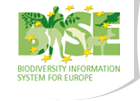Tree species of economic importance
Since timber and fuelwood production favours relatively few tree species, planted European forests deviate substantially from the potential natural vegetation.
At the European level, economically important and widespread tree species include Scots pine, Norway spruce, pedunculate and sessile oak, as well as European beech.
Distribution of main tree species in Europe according to their native range

Note: From observations from the national forest inventories
Source: European Commission, Joint Research Centre, European atlas of forest tree species, San-Miguel-Ayanz, J.(editor), Caudullo, G.(editor), De Rigo, D.(editor), Mauri, A.(editor), Houston Durrant, T.(editor), 2022
Pure coniferous forests are more vulnerable to disturbances (storms, wildfires and insect outbreaks). This has lead to an increase in 'close-to-nature' oriented forest management with more planted broadleaved species in central Europe since the 1990s.
At least 150 non-native tree species have been introduced in Europe, intentionally or accidentally. These species are not necessarily invasive and are currently growing in European forests and provenance trials, covering an area of approximately 8.5 M ha.
The area covered by introduced trees has increased steadily in the European Union and Europe between 1990 and 2015 but decreased slightly in Central-West Europe between 2005 and 2015 [4]. These species mainly originate from North America, and Asia and Australia to a lesser extent. Eucalyptus, Pinus, Acacia and Abies are the most common genera in Europe. At the same time, the most occurring non-native species are Douglas fir, Sitka spruce, Tasmanian blue gum and black locust.
Distribution of main non-native tree species in Europe

Note: From observations from the national forest inventories
Source: European Commission, Joint Research Centre, European atlas of forest tree species, San-Miguel-Ayanz, J.(editor), Caudullo, G.(editor), De Rigo, D.(editor), Mauri, A.(editor), Houston Durrant, T.(editor), 2022










